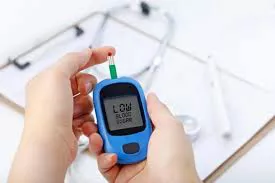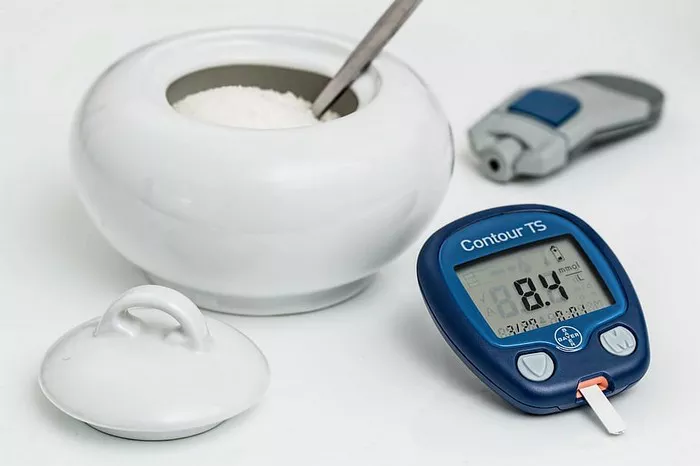Introduction
Diabetes mellitus, a chronic condition characterized by high blood sugar levels, is a global health concern. Effective management of diabetes hinges on maintaining optimal blood glucose levels to prevent both acute complications and long-term damage to organs. Among various measures, fasting blood sugar levels serve as a critical indicator for assessing metabolic health and guiding treatment strategies. This article delves into what constitutes the best fasting blood sugar level, exploring evidence-based guidelines, factors influencing these levels, and practical recommendations for achieving and maintaining them.
Understanding Fasting Blood Sugar Levels
What is Fasting Blood Sugar?
Fasting blood sugar (FBS) refers to the concentration of glucose in the blood after an individual has not eaten for at least 8 hours. This measure provides a snapshot of the body’s ability to regulate glucose in the absence of dietary intake, reflecting the efficiency of insulin production and function.
Importance of Monitoring Fasting Blood Sugar
Regular monitoring of FBS is crucial for diagnosing prediabetes and diabetes, assessing the effectiveness of treatment regimens, and preventing complications. Elevated fasting blood sugar levels can indicate insulin resistance, pancreatic dysfunction, or other metabolic disturbances that necessitate medical intervention.
Optimal Fasting Blood Sugar Levels: Guidelines and Ranges
Recommended Levels for Non-Diabetic Individuals
For individuals without diabetes, a normal fasting blood sugar level typically ranges from 70 to 99 mg/dL (3.9 to 5.5 mmol/L). Maintaining blood sugar within this range minimizes the risk of developing diabetes and its associated complications. These values are endorsed by leading health organizations such as the American Diabetes Association (ADA) and the World Health Organization (WHO).
Prediabetes and Diabetes Diagnostic Criteria
Prediabetes is identified when fasting blood sugar levels range from 100 to 125 mg/dL (5.6 to 6.9 mmol/L). This intermediary stage signals increased risk for developing type 2 diabetes and cardiovascular diseases if no preventive measures are taken.
Diabetes is diagnosed when fasting blood sugar levels are 126 mg/dL (7.0 mmol/L) or higher on two separate occasions. Such readings reflect significant impairment in glucose regulation and necessitate immediate medical intervention to manage blood sugar levels and mitigate complications.
Targets for Diabetic Patients
For individuals with diabetes, the ADA recommends fasting blood sugar levels between 80 and 130 mg/dL (4.4 to 7.2 mmol/L) as a general target. However, personalized goals may vary based on factors such as age, duration of diabetes, comorbid conditions, and risk of hypoglycemia.
Factors Influencing Fasting Blood Sugar Levels
Insulin Sensitivity and Secretion
Insulin, a hormone produced by the pancreas, plays a pivotal role in regulating blood glucose levels. Insulin sensitivity refers to how effectively the body’s cells respond to insulin, facilitating glucose uptake from the bloodstream. Reduced insulin sensitivity (insulin resistance) leads to higher fasting blood sugar levels.
Insulin secretion pertains to the pancreas’s ability to produce insulin in response to rising blood glucose levels. Impairment in insulin secretion, often due to beta-cell dysfunction, can also result in elevated fasting blood sugar.
Lifestyle Factors
- Diet: High intake of refined carbohydrates and sugars can cause prolonged elevation in blood sugar levels, contributing to insulin resistance.
- Physical Activity: Regular exercise enhances insulin sensitivity, promoting better glucose uptake by muscles and lowering fasting blood sugar levels.
- Sleep: Poor sleep quality or insufficient sleep can negatively affect glucose metabolism and insulin sensitivity, leading to higher fasting blood sugar levels.
- Stress: Chronic stress triggers the release of stress hormones like cortisol, which can increase blood sugar levels by promoting gluconeogenesis and impairing insulin function.
Medical Conditions and Medications
Certain medical conditions, such as Cushing’s syndrome and polycystic ovary syndrome (PCOS), can influence fasting blood sugar levels. Medications, including steroids and certain psychiatric drugs, may also affect glucose metabolism.
Strategies to Achieve Optimal Fasting Blood Sugar Levels
Dietary Approaches
- Balanced Nutrition: Emphasize a diet rich in whole grains, lean proteins, healthy fats, and plenty of fruits and vegetables to maintain stable blood sugar levels.
- Low Glycemic Index Foods: Incorporate foods with a low glycemic index (GI), which are digested and absorbed more slowly, resulting in gradual rises in blood sugar levels.
- Portion Control: Monitor portion sizes to avoid excessive calorie intake, which can lead to weight gain and insulin resistance.
Physical Activity
Engaging in regular physical activity, such as aerobic exercises, resistance training, and flexibility exercises, can significantly improve insulin sensitivity and help maintain optimal fasting blood sugar levels. Aim for at least 150 minutes of moderate-intensity aerobic activity or 75 minutes of vigorous-intensity activity per week, coupled with muscle-strengthening activities on two or more days a week.
Weight Management
Achieving and maintaining a healthy weight through a combination of diet and exercise is crucial for improving insulin sensitivity and lowering fasting blood sugar levels. Even modest weight loss (5-10% of body weight) can have significant benefits for blood sugar control.
Medication and Medical Management
For individuals with diabetes, medications such as metformin, sulfonylureas, or insulin therapy may be necessary to achieve target fasting blood sugar levels. Regular monitoring and consultations with healthcare providers are essential to tailor treatment plans and make adjustments as needed.
Stress Management
Incorporating stress-reducing practices such as mindfulness, meditation, yoga, and deep-breathing exercises can help lower stress hormone levels and improve blood sugar control.
Sleep Hygiene
Maintaining good sleep hygiene by establishing regular sleep patterns, creating a conducive sleep environment, and avoiding stimulants close to bedtime can positively influence fasting blood sugar levels.
The Role of Continuous Glucose Monitoring (CGM)
Benefits of CGM
Continuous glucose monitoring (CGM) provides real-time data on glucose levels, offering a comprehensive view of glucose trends and patterns. This technology is particularly beneficial for individuals with diabetes, allowing for timely adjustments in diet, exercise, and medication.
Impact on Fasting Blood Sugar Management
CGM devices can help identify nocturnal hypoglycemia and dawn phenomenon (early morning rise in blood sugar), enabling more precise management strategies. The data obtained from CGM can guide lifestyle and treatment adjustments to achieve optimal fasting blood sugar levels.
Challenges in Achieving Optimal Fasting Blood Sugar Levels
Individual Variability
Individual responses to dietary changes, exercise, and medications can vary widely. Personalized treatment plans and close monitoring are essential to address these differences and achieve desired blood sugar targets.
Adherence to Lifestyle Changes
Sustaining dietary and lifestyle changes can be challenging due to various factors such as socioeconomic status, access to healthy food options, and personal motivation. Support from healthcare providers, family, and community resources is crucial for maintaining adherence.
Psychological Factors
Mental health issues such as depression and anxiety can negatively impact diabetes management, making it more difficult to maintain optimal fasting blood sugar levels. Integrating psychological support and counseling into diabetes care is important for holistic management.
Future Directions and Innovations
Advances in CGM and Insulin Delivery Systems
Ongoing advancements in CGM technology and insulin delivery systems, such as closed-loop systems (artificial pancreas), hold promise for more precise and automated blood sugar management. These innovations can further improve fasting blood sugar control and overall diabetes management.
Personalized Medicine
The future of diabetes management lies in personalized medicine, where treatment plans are tailored based on genetic, metabolic, and lifestyle factors. Research in this area is ongoing, with the potential to revolutionize how we approach fasting blood sugar control.
Public Health Initiatives
Public health initiatives aimed at promoting healthy lifestyles, improving access to nutritious foods, and increasing awareness about diabetes prevention and management are essential for addressing the growing diabetes epidemic. Community-based programs and policies can play a significant role in supporting individuals in achieving and maintaining optimal fasting blood sugar levels.
Conclusion
Maintaining optimal fasting blood sugar levels is a cornerstone of effective diabetes management and prevention. For non-diabetic individuals, keeping fasting blood sugar within the range of 70 to 99 mg/dL is ideal. For those with diabetes, individualized targets around 80 to 130 mg/dL are recommended. Achieving these goals requires a multifaceted approach, including balanced nutrition, regular physical activity, weight management, stress reduction, and adherence to medical treatment plans.
Continuous glucose monitoring and future innovations in diabetes care offer promising tools to enhance blood sugar control. However, addressing the challenges of individual variability, lifestyle adherence, and psychological factors is crucial for sustained success. Through comprehensive management strategies and supportive public health initiatives, we can work towards better metabolic health and improved quality of life for individuals worldwide.
Related topics:
What Is The Best Blood Sugar Monitoring Device?
























